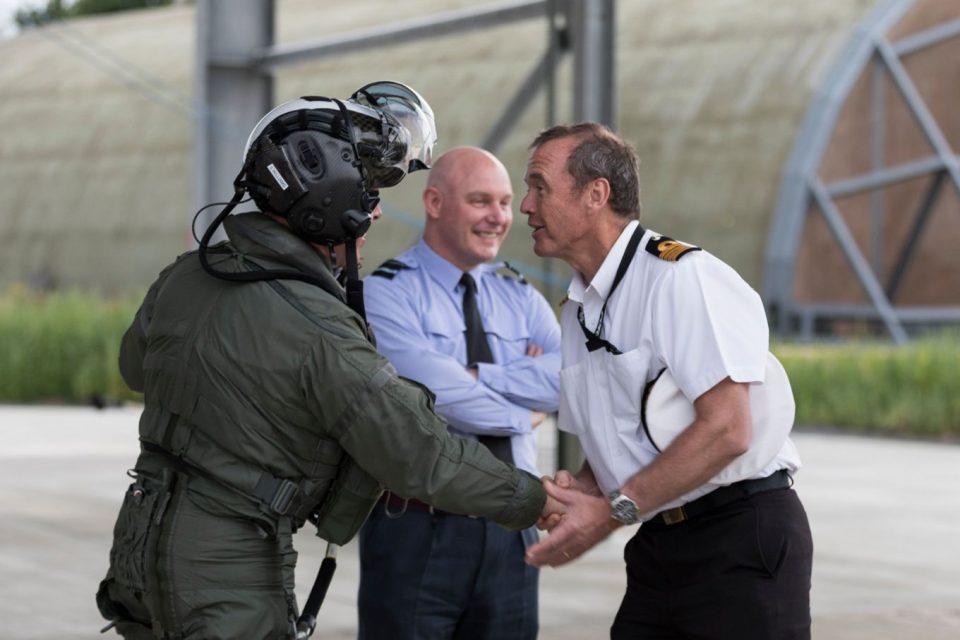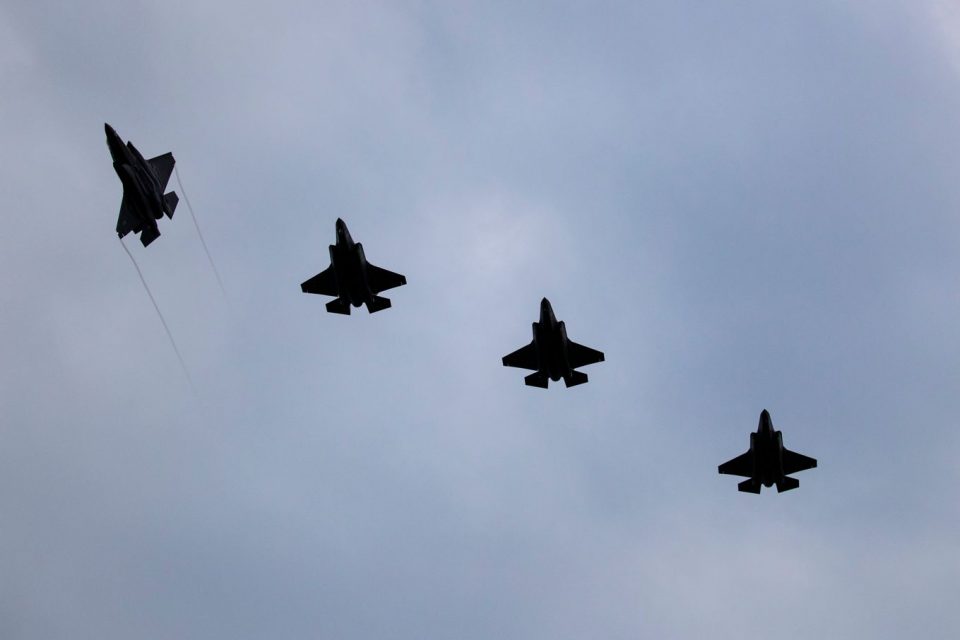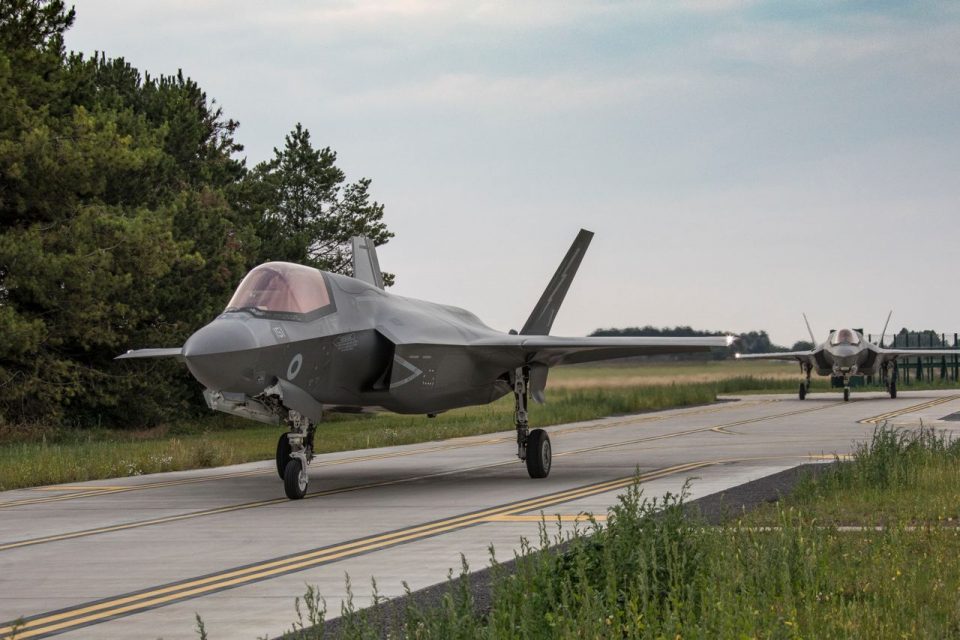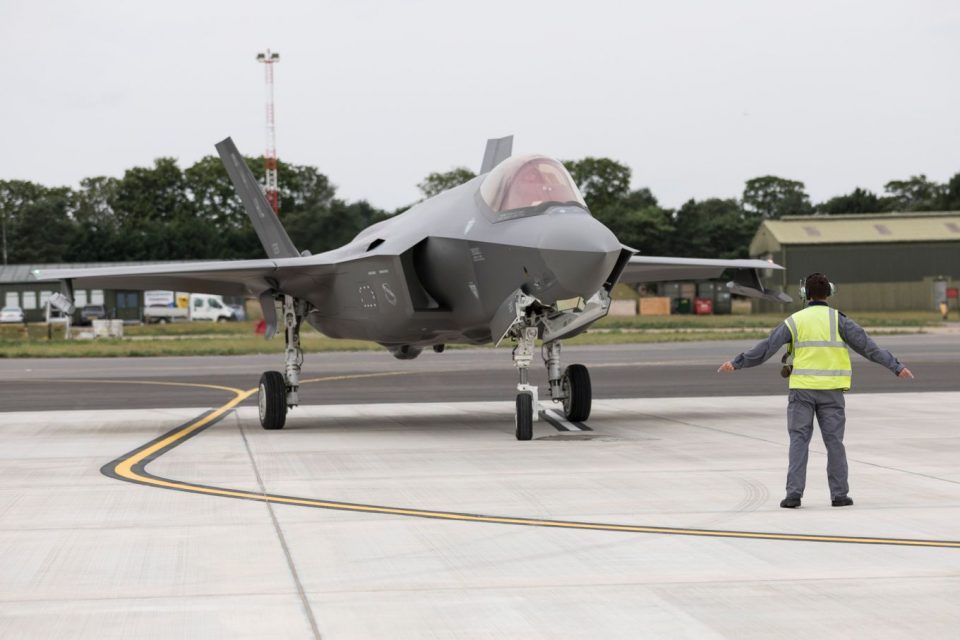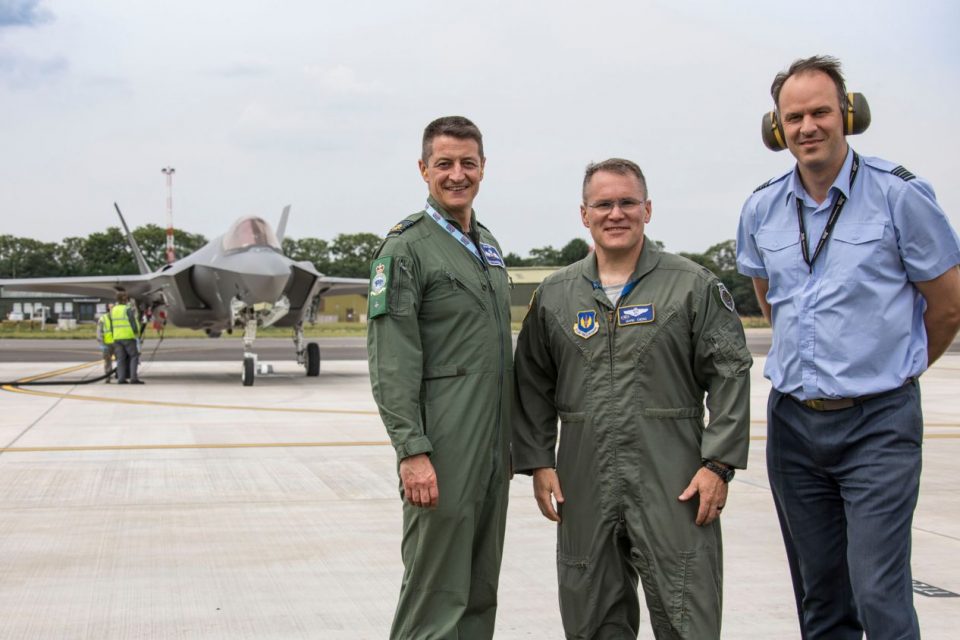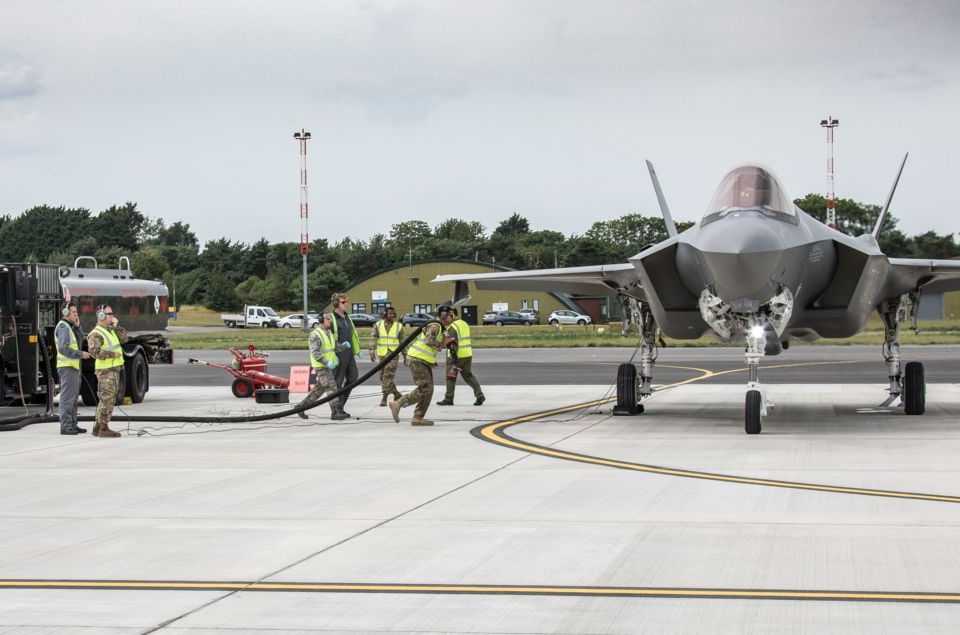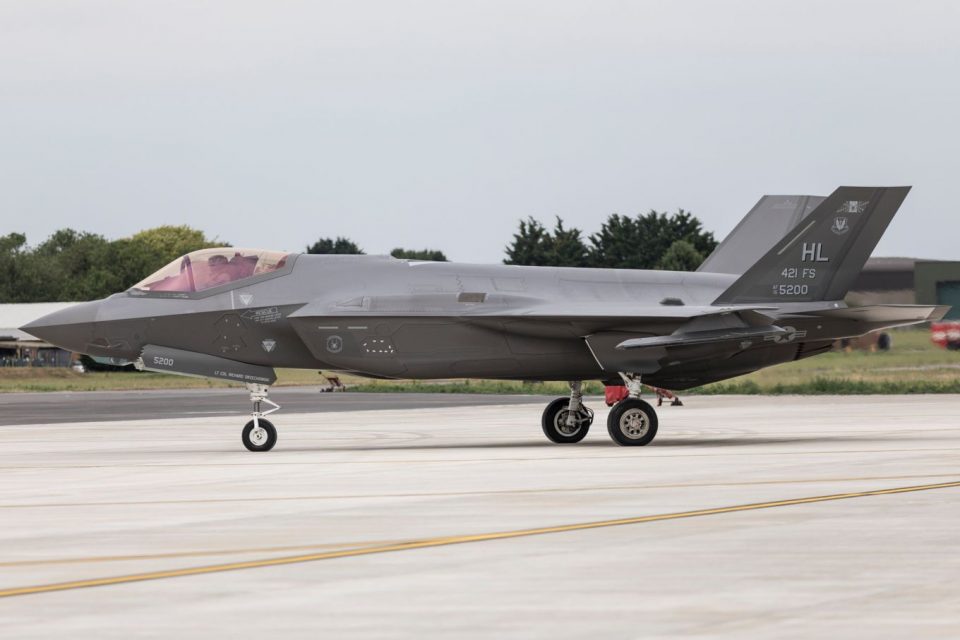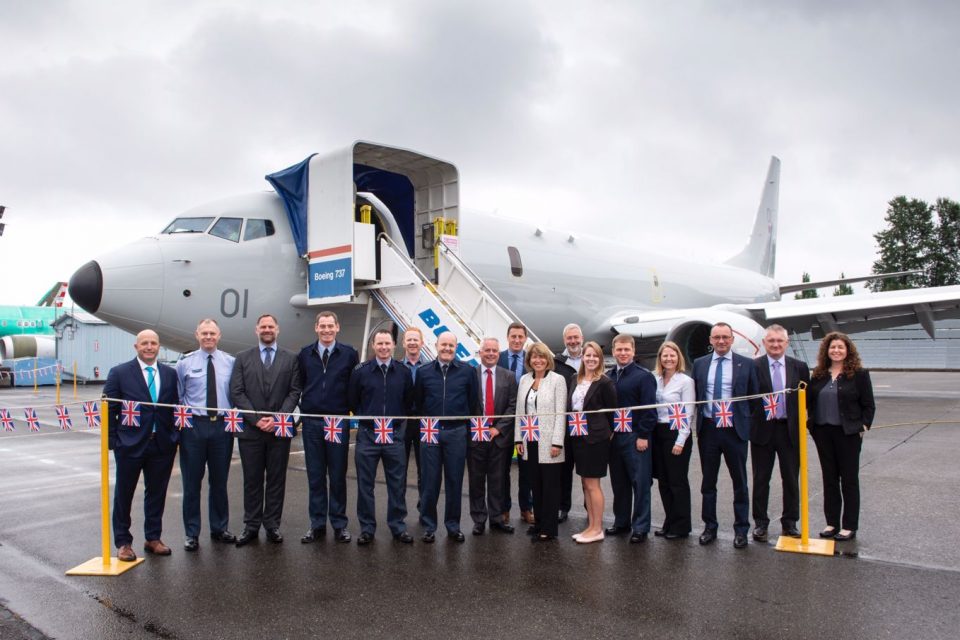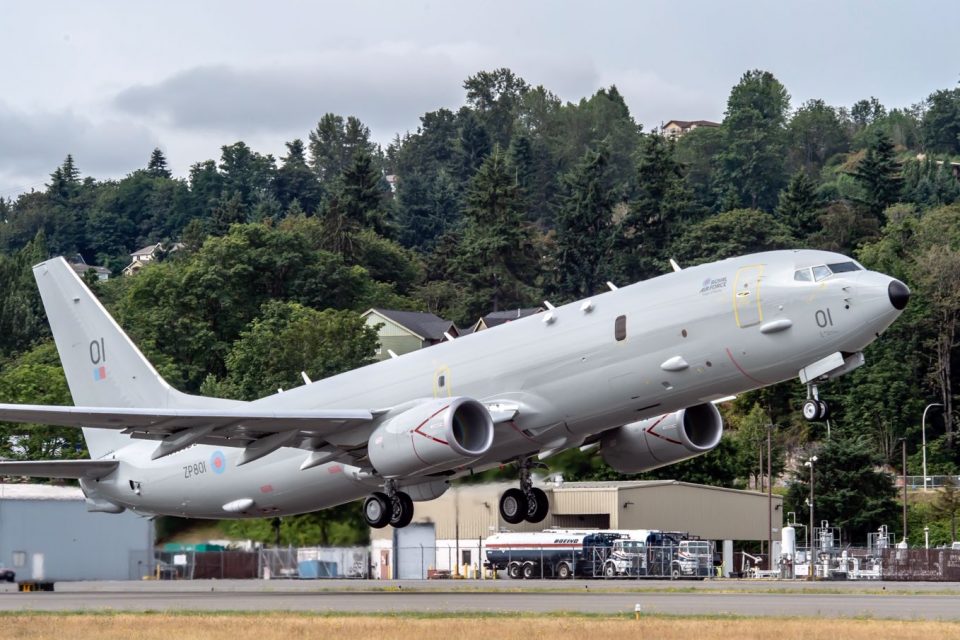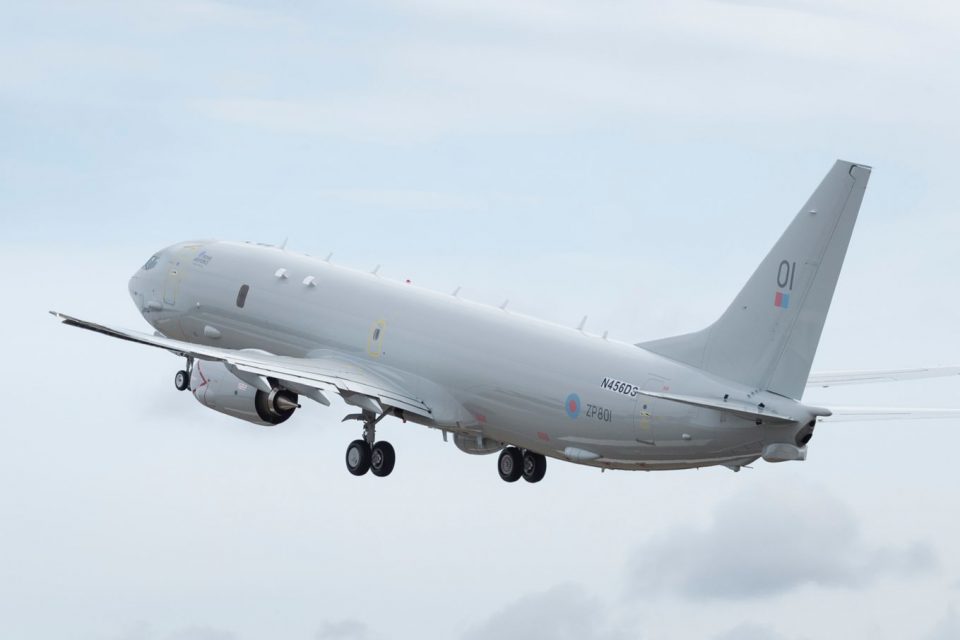The RAF is in the throes of a modernization process, which involves becoming fifth generation enabled, with legacy upgrades to its Typhoons, and the return to ASW operations with regard to introducing its new P-8 as well.
And recently, it was announced that the RAF would add the unique battle management asset, the Wedgetail as well.
This month we are seeing glimpses of the modernization process.
First, the second lightning fighter jet squadron has arrived at RAF Marham.
In a story published on the UK MoD website on July 18, 2019, the event was underscored.
The arrival of 207 Squadron will see all training on the next-generation jet conducted in the UK for the first time.
Minister for the Armed Forces Mark Lancaster said:
“The arrival of 207 Squadron represents another milestone in the progress of this world-beating aircraft.
As we welcome 207 Squadron home from our US allies, the transatlantic military relationship continues to be the strongest and deepest of any two nations in the world.”
Air Chief Marshal Sir Stephen Hillier, Chief of the Air Staff, said:
“I was delighted to see the second squadron of the most advanced and dynamic fighter jet in our history arrive today at RAF Marham.
Being able to train our pilots in the UK is another great leap in our sovereign capability and will ensure the Royal Air Force and Royal Navy can train our pilots to fight and win with these extraordinary jets, which will sit at the heart of our country’s globally deployable forces.”
Since 2013 Royal Air Force and Royal Navy personnel have trained alongside US Marine Corps counterparts at Marine Corps Air Station (MCAS) Beaufort.
Six of the cutting-edge aircraft took the 10-hour flight from MCAS Beaufort in South Carolina. The formation included the UK’s 18th Lightning fighter jet, demonstrating the UK’s progress towards meeting the projected order of 138 aircraft over the life of the programme.
207 Squadron will formally stand up on 1 August 2019 and the first F-35 pilot course at RAF Marham is due to commence in early-September.
Engineers are already trained at RAF Marham’s Integrated Training Centre, part of a £550m investment in the Station which has also seen the resurfacing of runways and the addition of new landing pads to allow the jets to land vertically.
Wing Commander Scott Williams, Officer Commanding 207 Squadron said:
“After experiencing the excellent training offered by our US allies and achieving a good level of experience and knowledge across our instructors, the time is now right to move 207 Squadron from the USA to the UK.
We are thoroughly looking forward to being based at RAF Marham and training our F-35 pilots here in the UK.”
This is the third tranche of F-35s to arrive in the UK; 617 Dambusters Squadron arrived at their new permanent home last year and completed their first operational mission in the fight against Daesh in June. The F-35 is the world’s largest defence programme and has already generated $12.9Bn worth of orders and at peak production will support thousands of British manufacturing and engineering jobs.
The UK is providing 15% by value of every one of over 3,000 F-35s set for the global order book. In addition, Sealand Support Services Ltd – a MOD and industry joint venture based at MOD Sealand in North Wales – recently won £500m worth of assignments to repair the aircraft’s components and avionics systems.
The UK is preparing for operations from Cyprus this Fall and is part of shaping its air expeditionary capabilities for its F-35s going forward.
In an interview last May, Group Captain Ian Townsend, the RAF Marham base commander noted that the deployment to Cyprus puts them into an environment where the F-35 global collaboration comes into play with USAF, and USMC or USN, Italian or Israeli F-35s operating in the region as well.
“This comes back to the significant opportunity of operating a common fifth generation platform provides for the UK.
“We will have a significant opportunity to cross-learn and cross operate as the F-35 ramps up in deployed numbers in the region as well.
“Somehting which s being repeated as well in Northern Europe.”
The cross learning was highlighted as well by the arrival of USAF F-35s at RAF Marham as well.
According to a story posted on the RAF website on July 18, 2019, the arrival was noted as follows:
A pair of US Air Force F-35A Lightning fighter jets have visited RAF Marham to allow RAF, Royal Navy and USAF ground crew to conduct joint training. Usually based at Hill Air Force Base, Utah, the 421st Fighter Squadron, Black Widows, are currently deployed to Germany.
This was the first time the A model of the F-35 had landed at Marham, the permanent home of the UK fleet of B model Lightnings.
Ahead of the arrival of the American aircraft a team of maintainers from the 421st Aircraft Maintenance Unit had arrived at the Norfolk station to work with Marham’s Visiting Aircraft Servicing Section, led by Master Sergeant Tyler Berry who said: “We’re training the RAF Team on how to hot refuel our F-35As to improve interoperability with our NATO allies.”
Hot refuelling sees aircraft refuelled with engines running, a process aimed at keeping aircraft on the ground for the shortest time possible. USAF maintainers refuelled one aircraft shadowed by RAF personnel before swapping places for the second Lightning.
Wing Commander Colin Feeney, OC Engineering Wing, RAF Marham said: “This breaks the ice for interoperability ahead of RAF Lakenheath receiving its first F-35As in the coming years. Keeping the links between neighbours strong is highly important for when we’ll both operate 5th Gen air systems.”
Colonel Mark Ciero of USAF Europe was also on hand to observe the training. He said: “This is the first great step toward full maintenance interoperability. It’s a good day for the USAF and RAF as we experience our first integrated hot pit refuelling with our newest and most capable fighter aircraft.
“The proximity of RAF Marham and RAF Lakenheath and the future of our mutual 5th Generation capability demonstrates our two nations shared approach to the defence of Europe.”
When Brigadier General Novotny, currently at Nellis AFB as the 57thWing Commander, was the base Commander at RAF Lakenheath he highlighted how the F-35 was a foundational capability as an air system for enhanced US and coalition combat capabilities in the region:
“I did two OT assignments and we worked to get into Red Flag when we could to do joint training. Here we can do that virtually every day. We reach the Dutch training airspace, and can work with the Dutch, with the Brits, with the Germans, with Typhoons, with F3s, with the NATO AWACS
“We take off and we fly 30 minutes to the east and we make it happen.
“It is Red Flag as regular menu; rather than scheduling a gourmet meal from time to time.
“Most of that learning is done after the sortie. Face-to-face interaction, the conversations that are happening in the squadron vaults that happens at Red Flag three weeks out of every two years.
“We will have the opportunity to do that regularly here.
“There is such a unique opportunity here compared to any other place.
“Because every other place which is s going to get into the F-35 program in whatever capacity is going to eventually attempt to develop a little bit of a stovepipe. It happens.
“This is the only place where it’s not the case.
“There’s no other place where we have a maintenance officer who’s run into an issue on Monday at Lakenheath and decides to get in the car and drive 35 minutes to Marham and talk to them and see what they’ve figured out face-to-face.
“Learn to listen.
“Have a bite to eat.
“Be back here by 2:00 in the afternoon with the solution that came from another country.”
And the final vignette from this month highlighting RAF modernization involved the P-8.
According to a July 13, 2019 story published on the RAF website, the UK’s first Poseidon aircraft has taken flight.
The first of Britain’s new fleet of nine maritime patrol aircraft has taken to the skies. The flight of the Poseidon MRA Mk1 (P-8A) was completed successfully at the hands of Boeing test pilots.
Following this first test flight, the aircraft will transfer from Boeing Commercial Airplanes to Boeing Defense, Space and Security to be fitted out with the Poseidon-specific military systems. The aircraft is scheduled to be delivered to the Royal Air Force, initially at Naval Air Station Jacksonville, Florida, in October 2019 and is due to arrive in the UK in early-Spring 2020.
“It has been fantastic to meet with the Boeing team who build the Poseidon aircraft and to see our first Poseidon aircraft, ZP801, take to the skies on its inaugural flight. We look forward to the aircraft being delivered to Royal Air Force ownership in October.”
Air Commodore Richard Barrow, Senior Responsible Owner for the Poseidon Programme, said:
“The first cadre of RAF engineers and aircrew have been trained on the P-8A Poseidon which marks the resurgence of the RAF’s long-range maritime patrol capability. The Poseidon MRA Mk 1 will enhance the UK’s maritime patrol capability with advanced, state-of-the-art, Anti-Submarine Warfare and Anti-Surface Warfare sensors. This is an exciting time for the Royal Air Force especially for those based at RAF Lossiemouth”
Poseidon ZP801 will also carry the name Pride of Moray. This name celebrates the Maritime Patrol Aircraft heritage of Moray as well as looking forward to the Poseidon’s future home in RAF Lossiemouth, Moray, Scotland.
The RAF will procure a total of nine Poseidon aircraft which will be based at RAF Lossiemouth from Autumn 2020. The Poseidon will provide a globally deployable fifth-generation maritime patrol capability; specifically, the Poseidon will work side-by-side with the Royal Navy in securing the seas around the UK and abroad.
For an overview of UK air modernization see the following:
Fifth-Generation Enabled Military Transformation: Australia, the UK and Shaping a Way Ahead




